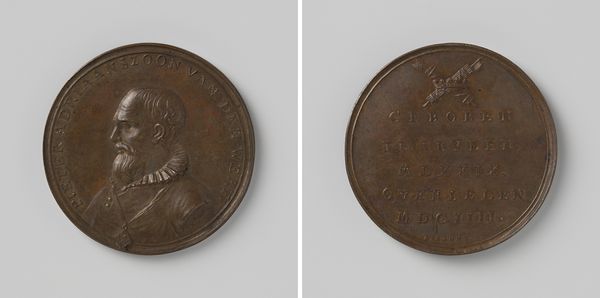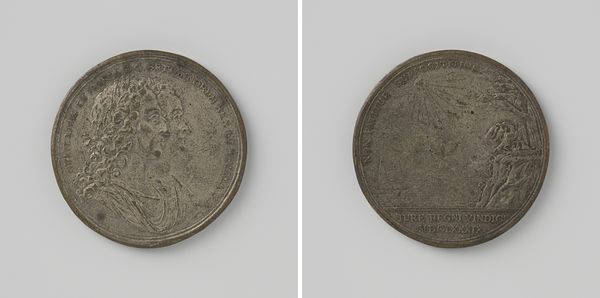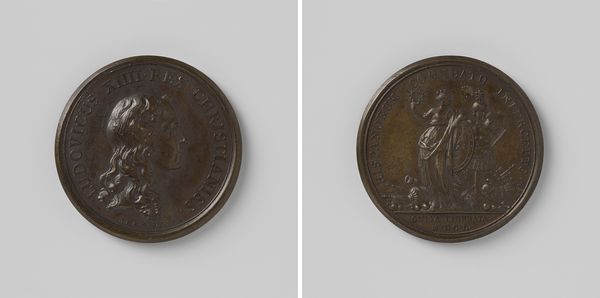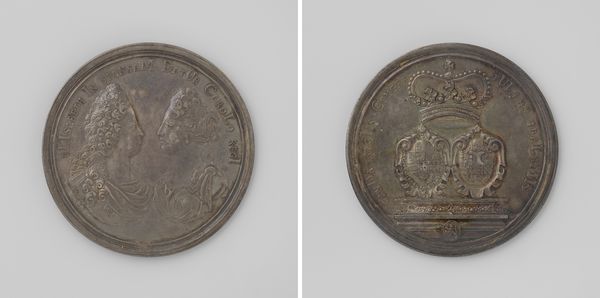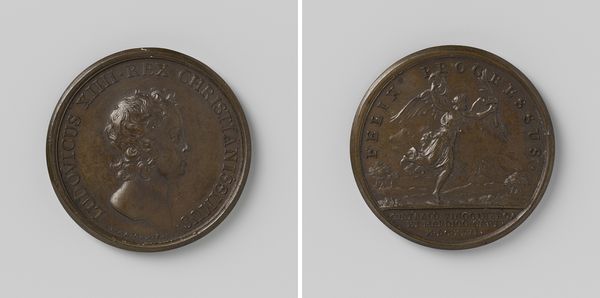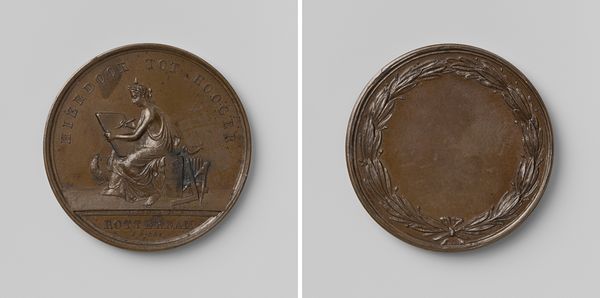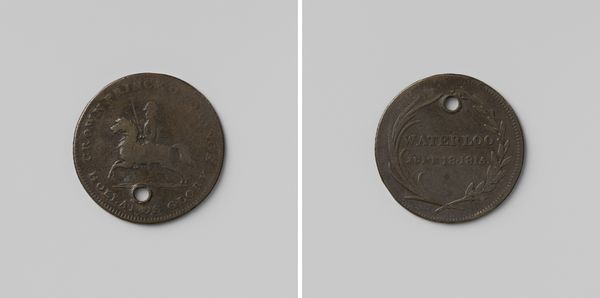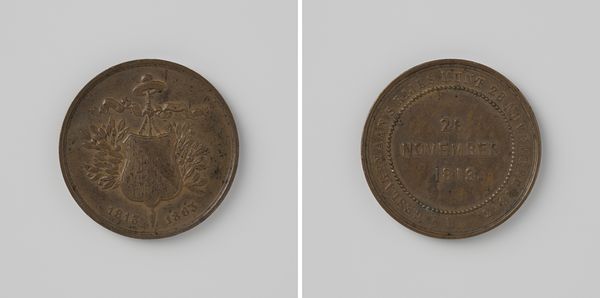
relief, bronze, sculpture
#
portrait
#
baroque
#
sculpture
#
relief
#
bronze
#
sculpture
#
ceramic
#
history-painting
Dimensions: diameter 5.6 cm, weight 500 gr
Copyright: Rijks Museum: Open Domain
Editor: So, this is “Overwinning bij Aghrim, behaald tijdens de afwezigheid van Willem III,” made of bronze by Jan (I) Smeltzing in 1691. It’s… a coin? It has these, like, bas-relief sculptures on either side. One looks like portraits, and the other is some kind of battle scene? What story does it tell? Curator: It's a fascinating object, isn’t it? Like a tiny time capsule! Think of it as a propaganda piece. The portrait side shows William and Mary. See how they almost share a head? It's not quite conjoined twins but they’re presented as ruling in harmony, strength in unity. And flipping it over, we see the Battle of Aughrim. Rather idealized, don't you think? All those heroic poses, that landscape which looks vaguely classical rather than the boggy reality of County Galway! Editor: Idealized how? Curator: Well, think about it – battle is brutal, chaotic, and probably quite smelly! Here, everything is carefully arranged to show victory and order. This wasn't just reporting news; this was shaping it, selling the idea of a divinely blessed, rightfully won victory to the people back home, mostly protestants from Holland and England. What do you make of the choice of bronze? Editor: I guess bronze makes it seem important, serious. Like something that’s meant to last? Curator: Exactly. Bronze has that air of permanence, of history. It's like saying, “This victory is going to be remembered forever!" It's interesting how even small objects can carry so much political weight, isn't it? Editor: Absolutely. It’s almost like holding a tiny, carefully constructed world in your hand. Seeing how they shaped their image. Wow. Curator: Right? History isn't just dates and names in a textbook, it is storytelling through material. Keep thinking of artworks this way!
Comments
No comments
Be the first to comment and join the conversation on the ultimate creative platform.
